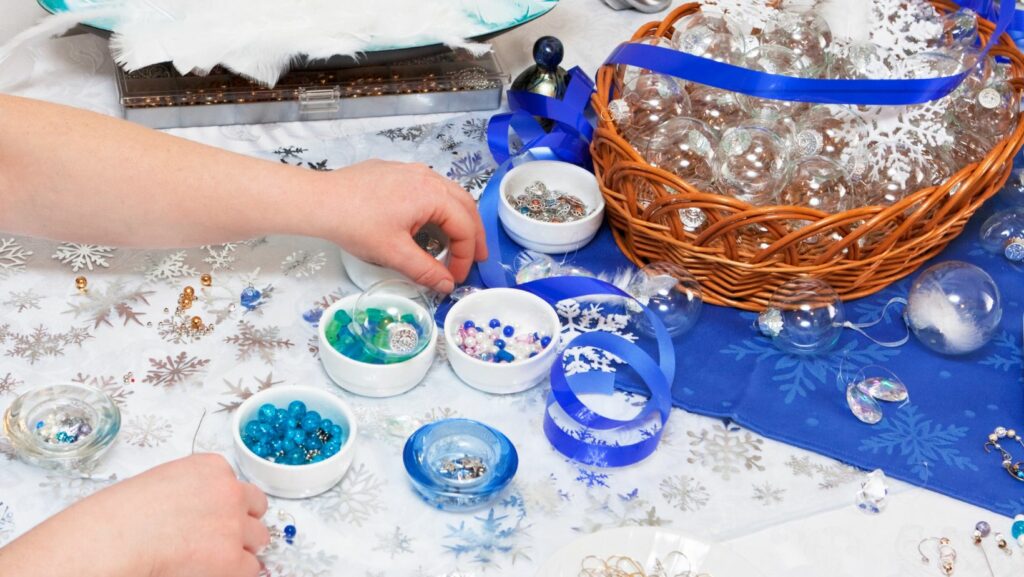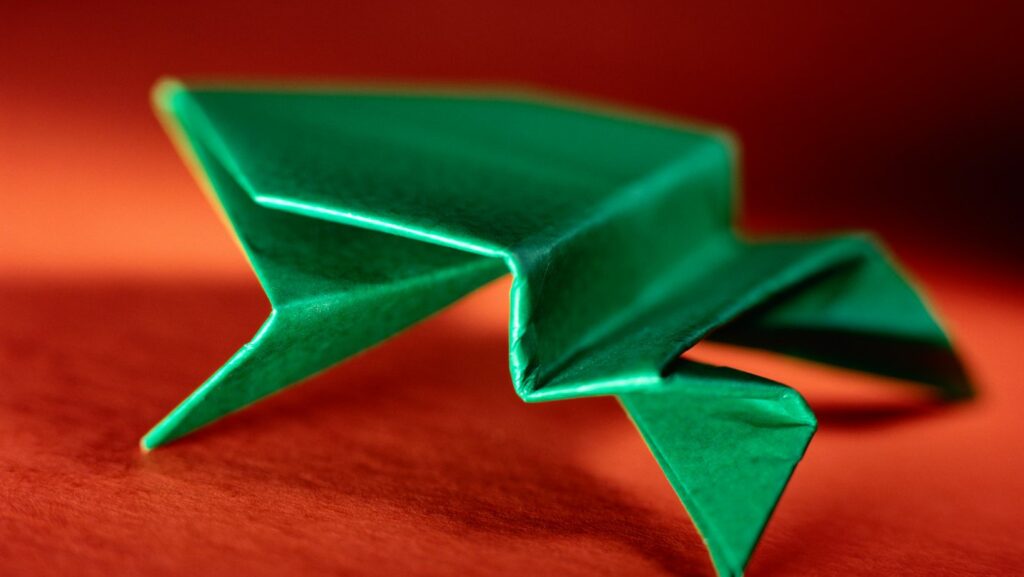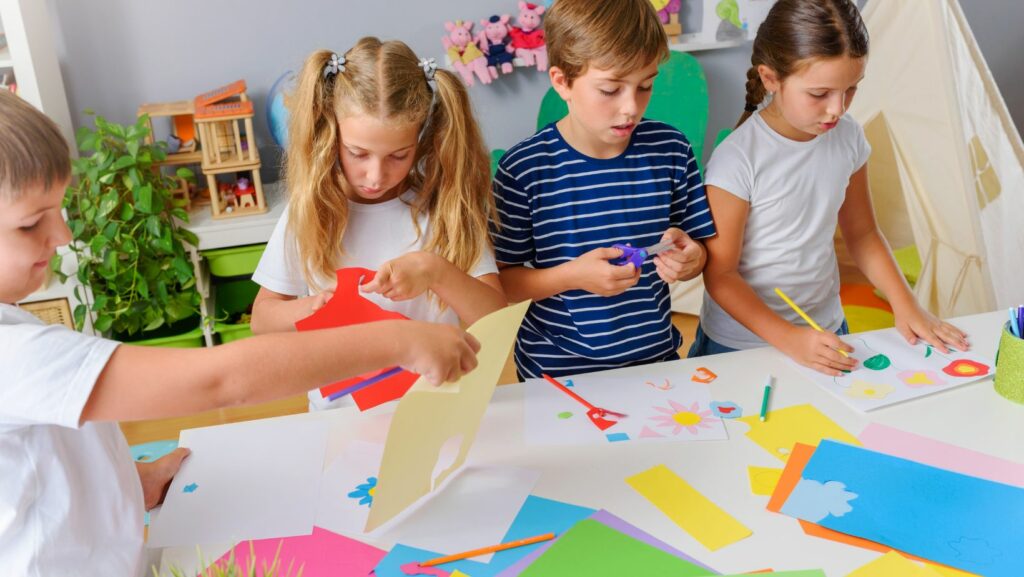Ornament Crafts
- Personalization and Creativity: Ornament crafts allow individuals to unleash their artistic flair, enhancing celebrations with unique, handcrafted decorations that reflect personal style.
- Cultural Significance: Various cultures attach different meanings and traditions to ornaments, using them to symbolize key life events and emphasize cultural heritage.
- Diverse Craft Types: Ornament crafting includes a range of handmade styles, from wood and fabric to ceramics and metal, providing infinite creative possibilities.
- DIY Inspiration: Simple DIY ornament ideas nurture creativity and stimulate family bonding, with options like salt dough, upcycled items, and nature-inspired designs.
- Material Variety: Crafting ornaments utilizes numerous materials, including natural, recycled, and sustainable options, promoting eco-friendly practices in decoration.
- Techniques and Tools: Understanding essential crafting techniques and tools enhances the quality of ornament creations, making the process more efficient and enjoyable.
Ornament crafts have a unique charm that brings creativity and personalization to any celebration. From festive holidays to special occasions, these handcrafted decorations add a touch of warmth and character to homes and gatherings. They allow individuals to express their artistic flair while creating cherished memories with loved ones.
Whether it’s crafting intricate ornaments from paper, wood, or fabric, the possibilities are endless. Each piece tells a story and reflects the maker’s personality, making them perfect gifts or keepsakes. Dive into the world of ornament crafts and discover how simple materials can transform into stunning decorations that brighten any space.
Overview of Ornament Crafts
Ornament crafts encompass a broad range of decorative creations that enhance personal and communal celebrations. These crafts serve as expressions of creativity and individuality, utilizing various materials to produce unique designs.
History of Ornament Crafts
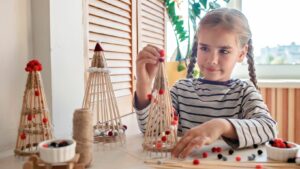 Ornament crafts date back thousands of years, with evidence of decorative items found in ancient civilizations such as Egypt and Mesopotamia. Historical records show that ornaments served both functional and aesthetic purposes, often linked to rituals or cultural practices. For example, ancient Egyptians adorned tombs with intricate ornaments to accompany the deceased in the afterlife. During the Middle Ages, ornamentation in churches became prevalent, showcasing craftsmanship and religious significance. With the advent of the Industrial Revolution, ornament crafts evolved as mass production took hold, yet handcrafted ornaments maintained their charm and personal touch.
Ornament crafts date back thousands of years, with evidence of decorative items found in ancient civilizations such as Egypt and Mesopotamia. Historical records show that ornaments served both functional and aesthetic purposes, often linked to rituals or cultural practices. For example, ancient Egyptians adorned tombs with intricate ornaments to accompany the deceased in the afterlife. During the Middle Ages, ornamentation in churches became prevalent, showcasing craftsmanship and religious significance. With the advent of the Industrial Revolution, ornament crafts evolved as mass production took hold, yet handcrafted ornaments maintained their charm and personal touch.
Cultural Significance
Ornament crafts hold varying cultural significance across the globe. Different societies use distinctive materials and designs that reflect their heritage and values. In many cultures, ornaments symbolize important life events, such as weddings or births, accompanying rituals and traditions. For instance, in Mexico, traditional piñatas serve as decorations during celebrations and represent fun and communal spirit. Scandinavian countries often incorporate natural elements in their Christmas ornaments, reflecting their connection to nature. Similarly, Native American ornament crafts often embody spiritual beliefs and storytelling, highlighting the importance of their history and environment. Each ornament not only embellishes surroundings but also carries the essence of cultural identity and shared experiences.
Types of Ornament Crafts
Ornament crafts encompass a diverse array of handmade decorations that add beauty and personal flair to various occasions. Various techniques and materials offer endless creative possibilities for crafting unique ornaments.
Handmade Ornaments
Handmade ornaments include items crafted with attention to detail and personal touch. Options range from intricate glass-blown ornaments to simple felt creations. Common materials include:
- Wood: Carved or painted wood ornaments showcase craftsmanship and natural aesthetics.
- Fabric: Sewn fabric ornaments, like those featuring quilting or embroidery, offer warmth and texture.
- Paper: Origami or cut-paper designs bring color and whimsy, suited for all ages.
- Ceramics: Glazed or unglazed ceramic pieces provide durability along with artistic expression.
- Metal: Etched or stamped metal ornaments incorporate elegance and shine.
These handmade ornaments often serve as cherished keepsakes or thoughtful gifts during celebrations.
DIY Ornament Ideas
DIY ornament ideas inspire creativity and personalization in crafting. Some accessible options include:
- Salt Dough Ornaments: Simple and versatile, salt dough can be shaped into various forms and painted once baked.
- Photo Ornaments: Personalize tree decorations using favorite photographs, framed in decorative materials.
- Nature-Inspired Ornaments: Collect natural elements like pinecones or twigs, then embellish them with paint or glitter for a rustic touch.
- Upcycled Ornaments: Transform used items like old jewelry or bottle caps into unique ornament creations, promoting sustainability.
- Painted Wood Slices: Decorate small wooden slices with festive designs or quotes for a charming, rustic look.
These DIY ornament ideas encourage individuals to express their creativity while enjoying memorable crafting experiences with family and friends.
Materials Used in Ornament Crafts
Ornament crafts utilize a variety of materials that enhance creativity and personalization. Selecting materials affects the ornament’s aesthetic and sustainability.
Common Materials
- Wood: Wood offers durability and a natural appearance. Common options include plywood and hardwood, ideal for intricate designs or rustic looks.
- Fabric: Fabric adds texture and color. Felt, cotton, and burlap are popular selections, allowing for sewing, embellishing, and layering.
- Paper: Paper provides versatility and ease of use. Cardstock, scrapbook paper, and origami paper work well for folding, cutting, and printing designs.
- Ceramics: Ceramics lend an artistic finish. Options include clay and porcelain, perfect for sculpting detailed and custom ornaments.
- Metal: Metal creates elegance and strength. Aluminum and copper sheets can be shaped and engraved, suitable for intricate patterns.
- Recycled Materials: Recycled paper, cardboard, and fabric offer sustainable crafting options. Using items like old magazines or clothing reduces waste.
- Natural Elements: Natural items like pinecones, leaves, and twigs provide organic beauty. These materials can be collected and assembled for seasonal decorations.
- Biodegradable Materials: Options such as cornstarch-based plastics and biodegradable glitter minimize environmental impact. These materials break down naturally.
- Upcycled Items: Upcycled objects like glass jars and bottle caps transform discarded items into creative ornaments. These items add character and charm.
- Sustainable Woods: Woods sourced from sustainable forests ensure an eco-conscious approach. Bamboo, for example, grows quickly and offers durability.
Techniques and Tools for Crafting
Ornament crafting involves various techniques and tools that enhance creativity and efficiency. Understanding these methods and instruments allows crafters to produce unique and personalized decorations.
Basic Techniques
- Cutting: Precision in cutting shapes is crucial, especially for materials like paper and fabric. Use sharp scissors or craft knives for accurate lines.
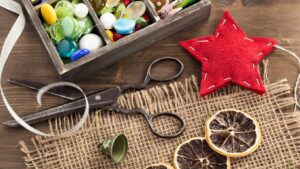
- Gluing: Strong adhesives provide durability. Craft glue, hot glue, or wood glue, depending on material compatibility, ensures secure bonding.
- Painting: Adding color through brushes or spray paint enhances aesthetics. Acrylic paints work well on various surfaces, including wood and ceramics.
- Sewing: Hand stitching or machine sewing creates unique fabric ornaments. Use a consistent stitch length for a professional finish.
- Decoupage: Layering paper or fabric with adhesive creates textured finishes. Mod Podge is a popular choice for this technique.
| Tool | Purpose |
|---|---|
| Scissors | For cutting paper, fabric, and lightweight materials. |
| Craft Knife | For intricate cuts on thicker materials like wood. |
| Ruler | For measuring and ensuring straight edges. |
| Glue Gun | For quick and strong bond, particularly with heavier items. |
| Paintbrushes | For applying paint cleanly and uniformly. |
| Sewing Kit | For stitching fabric ornaments. |
| Sandpaper | For smoothing wood surfaces before painting or sealing. |
| Cutting Mat | Protects surfaces during cutting and allows for precise measurements. |
| Decorative Punches | For creating decorative shapes and patterns in paper or thin materials. |
| Beads and Thread | For embellishing ornaments with textures and colors. |
Utilizing these techniques and tools not only improves the quality of ornament crafts but also fosters a more enjoyable crafting experience.
Self-expression and Creativity
Ornament crafts offer a wonderful opportunity for self-expression and creativity. Through various materials and techniques, individuals can create unique decorations that not only beautify their spaces but also carry personal significance. Engaging in these crafts fosters connection with loved ones and encourages sustainable practices.
Whether it’s a cherished keepsake or a thoughtful gift, each handcrafted ornament tells a story. By exploring the diverse world of ornament crafting, individuals can enrich their celebrations and create lasting memories. Embracing these creative outlets can transform ordinary moments into extraordinary experiences.

